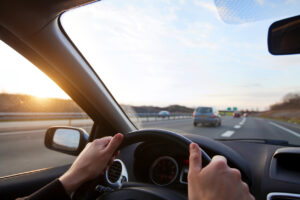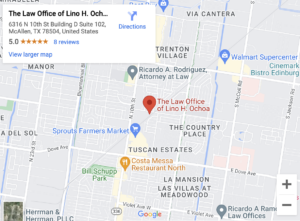
As a parent, it’s natural to worry about your child when they’re finally old enough to start driving on their own. Teen drivers are three times more likely to be involved in a fatal car accident than drivers 20 and older. In Texas, 14.4% of fatal traffic accidents involved a young driver, one of the highest rates in the country.
Their inexperience makes it harder to recognize dangerous situations. Teens are more likely to speed, tailgate, and become distracted.
Trying to find a vehicle that’s safe, reliable, and within your budget can feel a bit overwhelming. Here are the most important things to look for in your teenager’s first car, which you can weigh against price.
Lower Horsepower
As inexperienced drivers, teens are more likely to overestimate their ability to control and stop their vehicles while underestimating dangers. With a propensity for speeding, teenagers shouldn’t be given a car with a higher horsepower. This can make it too easy to speed and engage in reckless driving.
An average horsepower of 110 to 150 hp for a sedan is perfect for a young person still learning to drive on their own.
Medium Size
Generally, the larger the vehicle, the more protection it offers in a crash. However, SUVs, vans, and pickup trucks have the highest risk of rollover accidents. Rollovers make up a disproportionate share of fatal accidents.
Larger vehicles also have longer braking distances – a big concern given teens are more likely to follow too closely and speed. The additional seating they offer also poses a risk. The more teen passengers in the vehicle with a young driver, the higher the risk of an accident.
Occupants in a compact car have far less protection than a larger car offers and they are more likely to be injured in a crash. Small and compact cars make up 15 of the 20 models with the highest rates of driver fatality.
A medium-sized car offers the best compromise of protection and power.
Safety Features
Parents should also focus on safety features designed to prevent crashes from happening.
These newer safety features can make your teen safer on the road:
- Electronic stability control
- Side airbags
- Anti-lock brakes (ABS)
- Automatic emergency braking
- Blind-spot monitoring
- Forward collision warning
- Lane departure warning (LDW)
- Active lane-keeping assistance or lane centering
Crash imminent braking (CIB) systems use sensors to detect an imminent collision and apply automatic braking. If it’s within your budget, a vehicle with a highly rated CIB system makes an excellent choice for a teenager.
Crash Test Ratings
Make sure you check the vehicle’s crash test ratings before deciding. The National Highway Traffic Safety Administration (NHTSA) and Insurance Institute for Highway Safety (IIHS) release crash test data each year with crash test ratings that can be compared.
The NHTSA performs the following tests:
- Frontal crash test
- Side barrier crash test
- Side pole crash test
- Rollover resistance
An overall star rating out of 5 stars is awarded to each vehicle based on the results of all four tests.
The IIHS performs the following tests:
- Frontal crash test with three types of frontal collision
- Side crash test
- Roof strength test for rollover accidents
- Seat and head restraint testing
- Front crash prevention to determine how fast the driver is warned or how quickly speed is reduced if a pedestrian or stationary object is present
- Headlight testing
- LATCH testing
Vehicles are rated as Good, Acceptable, Marginal, or Poor. Driver assistance features are rated as Basic, Advanced, or Superior.
Reliability
Many organizations release car reliability rankings that are designed to estimate how much you will likely spend on maintenance and repairs.
Consumer Reports releases an annual car reliability brand ranking. The average vehicle is rated between 41 and 60 points on a scale of zero to 100.
The most reliable brands, according to the 2023 Consumer Reports, are:
- Toyota
- Lexus
- BMW
- Mazda
- Honda
J.D. Power also releases a vehicle dependability study every year. This study measures issues that original owners of three-year-old vehicles have experienced, customer satisfaction, and durability of technology features.
The 2023 J.D. Power study ranked Lexus, Genesis, Kia, Buick, and Chevrolet as the most dependable vehicles.
Small Cars
Small cars usually aren’t recommended for teen drivers, but several made the list of recommendations by the IIHS.
Small cars recommended for teen drivers include the following:
- Mazda 3 sedan or hatchback (2014 to 2020)
- Ford C-Max Hybrid (2014 to 2016)
- Toyota Prius (2014)
- Subaru Impreza sedan or wagon (2018 and 2022)
All four small cars were named Top Safety Picks by the IIHS. The Toyota Pirus and Ford C-Max Hybrid were not rated by the NHTSA, but the Subaru and Mazda both received 5-star overall ratings.
Midsize Cars
Midsize cars are generally considered the safest cars for teen drivers.
The following models have great safety ratings.
- Subaru Legacy (2013 to 2021)
- Mazda 6 (2014 to 2018)
- Subaru Outback (2015 to 2018)
- Toyota Prius v (2015 to 2017)
- BMW 3 series (2017 or newer)
- Volkswagen Passat (2017)
- Honda Accord (2013 or newer)
All seven vehicles are IIHS Top Safety Picks and have 5-star overall NHTSA ratings (except the Toyota Prius v, which was not rated).
Large Cars
If you’re considering a large car, both were IIHS’s top safety picks for 2016.
- Toyota Avalon (2015 or newer)
- Hyundai Genesis (2016)
The 2016 Hyundai Genesis received 5-star overall ratings for rollover, frontal crash, and side crash safety from the NHTSA. The Toyota Avalon received 4-star frontal crash and 5-star side crash safety ratings.
Small SUVs
Rollover is a major risk with an SUV, but the NHTSA and IIHS still highly rated these small SUVs.
The rollover risk, according to the NHTSA consists of the following:
- Honda HR-V (2017 or newer): 13.5% rollover risk
- Toyota RAV4 (2015 or newer): 16.9% rollover risk
- Mazda CX-5 (2014 or newer): 16.9% rollover risk
- Honda CR-V (2015 or newer): 17.4% rollover risk
The Mazda CX-5 and Honda CR-V received an overall 5-star rating from the NHTSA for frontal crash and side crash protection. While the Honda HR-V has the lowest rollover risk, it was rated four stars for overall frontal crash safety.
Midsize SUVs
The IIHS and NHTSA highly rate these midsize SUVs, but their NHTSA rollover risk is still noted as follows:
- Hyundai Santa Fe Sport (2018): 14.3% rollover risk
- Acura RDX (2016 or newer): 15.5% rollover risk
- Nissan Murano (2015 or newer): 15.1% rollover risk
- Toyota Highlander (2014 or newer): 16.9% rollover risk
The Hyundai Santa Fe Sport is a good choice if you’re looking for extra safety features. The 2018 model has optional safety technology.
Contact Our McAllen Car Accident Attorney to Learn More
At the Law Office of Lino H. Ochoa, we believe in equipping young drivers with the education and safe vehicles they need to develop into responsible motorists. If your teenager has been involved in an accident caused by another driver or an unsafe or defective vehicle, we are here to help. Contact our law office at (956) 815-0055 for a free consultation with a McAllen car accident lawyer to discuss your case.
Visit Our Personal Injury Law Office in McAllen, TX
The Law Office of Lino H. Ochoa
6316 N 10th St Building D, Suite 102
McAllen, Texas, 78504
(956) 815-0055
Hours: Monday to Friday,
from 8 am – 5 pm

